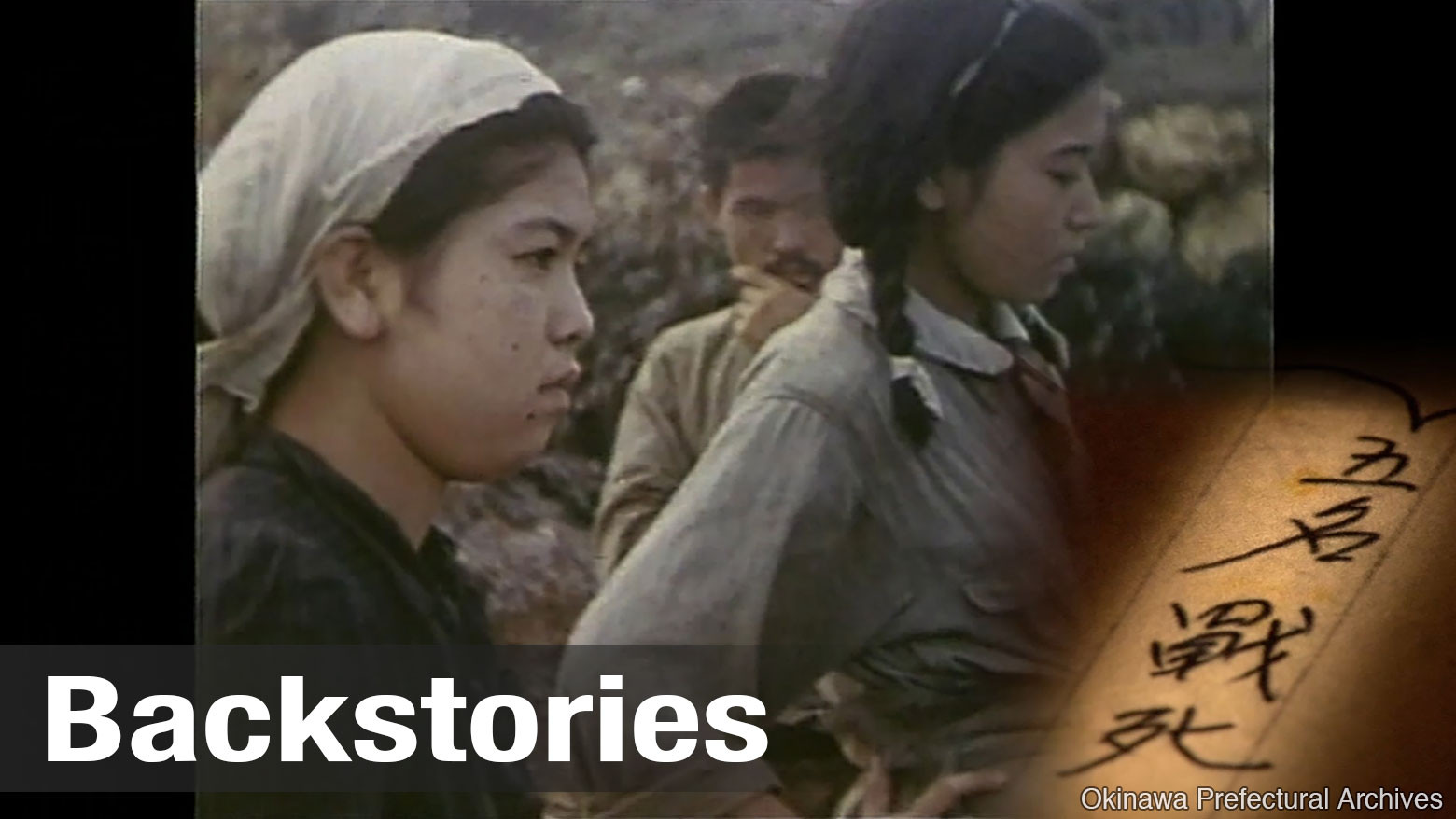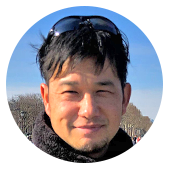The forgotten battlefield
It began with the first, full-scale ground battle at Nakagusuku in central Okinawa. More than 5,500 people, about one-third of the village, eventually lost their lives in the Battle of Okinawa.
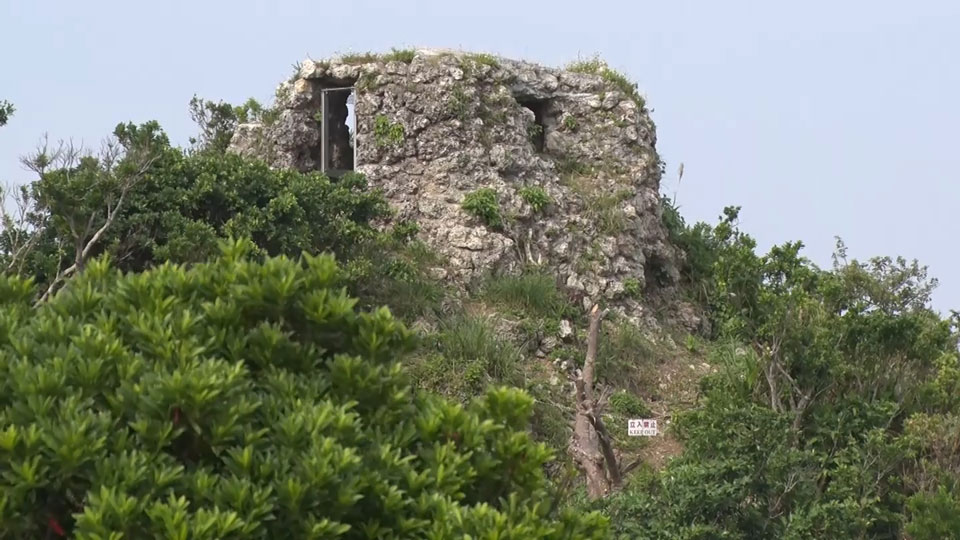
On a hill overlooking the village, a ruin of the bloody battle remains. It was a fortified position used by the Imperial Japanese Army, disguised as part of the hill.
It is rare to find such a well-preserved battle ruin. We explored the site with a military expert and village officials.
"This area was attacked. You can see it's burnt. This was probably charred by a flamethrower," said retired colonel Kazumi Kuzuhara, who was with the Ground Self-Defense Force.
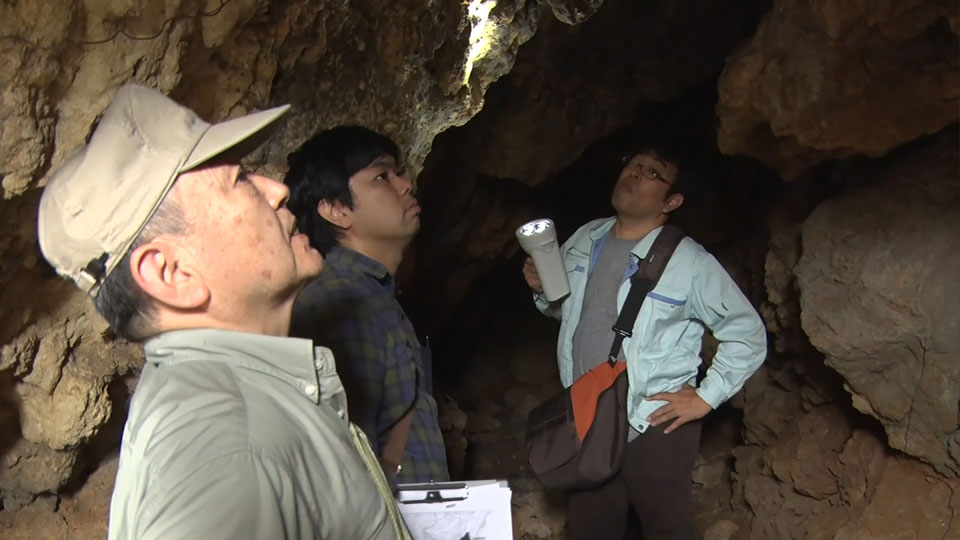
The battle against US forces at Nakagusuku was in early April, 1945. US troops were ambushed by Japanese forces hiding in underground tunnels in the hill. The tunnels are now collapsed, so the overall structure is unclear.
Most records of the battle were destroyed in the war, and 74 years later, village officials still struggle to understand what happened.
"Many villagers got caught up in the war and lost their lives. We're trying to get a better grasp of the link between their deaths and the military operations that took place here," said Wataru Inamine, a researcher at the Nakagusuku Board of Education. "Once we understand this, we'd like to share the information with local residents."
"The Pinnacle" a game changer
We found more detailed information about this battle in US military archives, some of it kept at a US Marine base in Okinawa.
Mark Waycaster, a curator of The Battle of Okinawa Historical Display, pulled out an intelligence monograph of the 10th US Army. "It's basically every scrap of information they learned during this battle," he said.
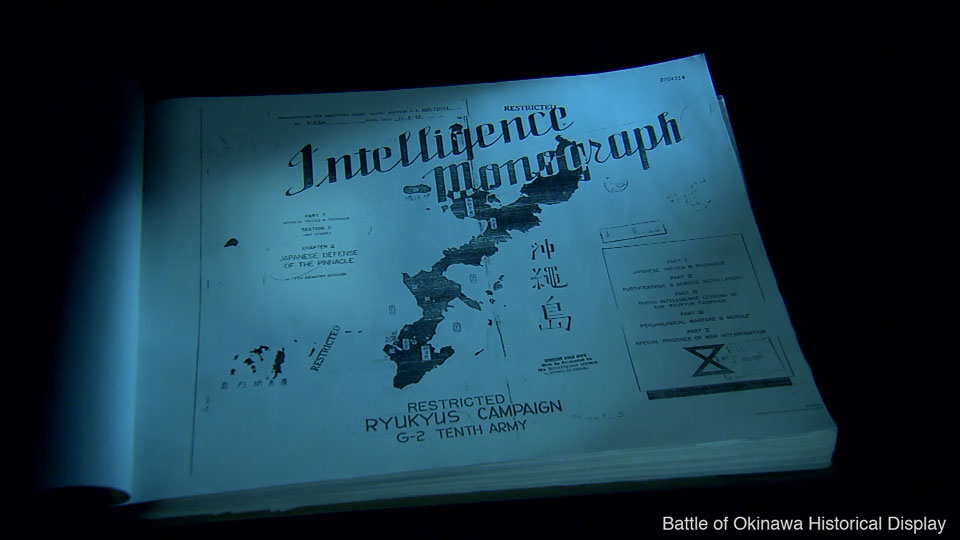
The document was prepared for a future invasion of the Japanese mainland. The fortifications at Nakagusuku are depicted as a prime example of Japanese defensive tactics. A diagram shows the fortified position on the hill overlooking the village. American forces called it "the Pinnacle."
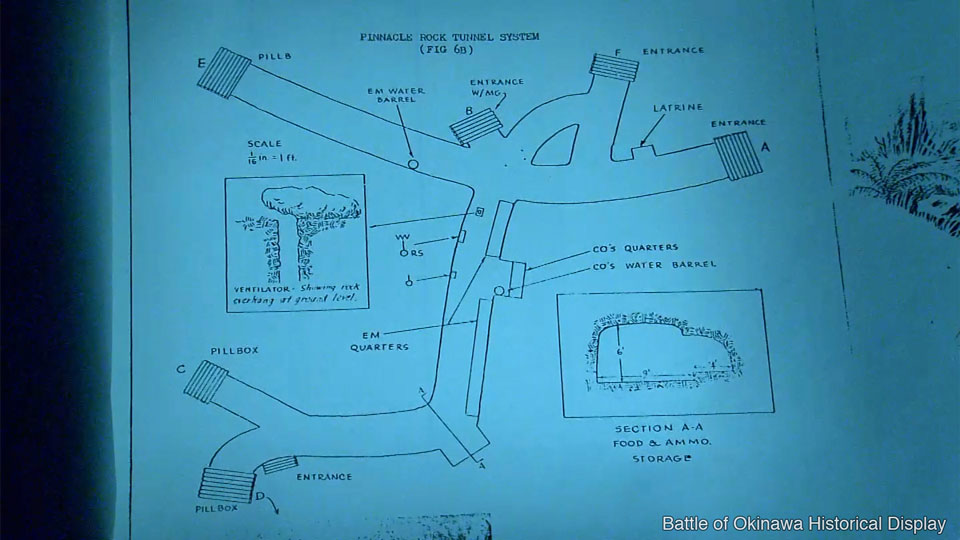
From the document, we were able to get an idea of the Pinnacle's intricate network of underground tunnels and hidden entrances. This strategy enabled Japanese troops to stage surprise attacks on US forces, from multiple directions. The attacks instilled terror among the American soldiers, who couldn't predict where they would come from next.
"The battle at the Pinnacle was a horror show for them," said Waycaster. "It was the first taste the Americans had of a consolidated Japanese defense on the island. It became a game changer for them."
More than 700 US soldiers attacked the Pinnacle, accompanied by tanks. They were pushed back repeatedly by a Japanese force that was four times smaller. The Americans intensified their attacks, and a growing number of civilians died in the crossfire, many of them from the village.
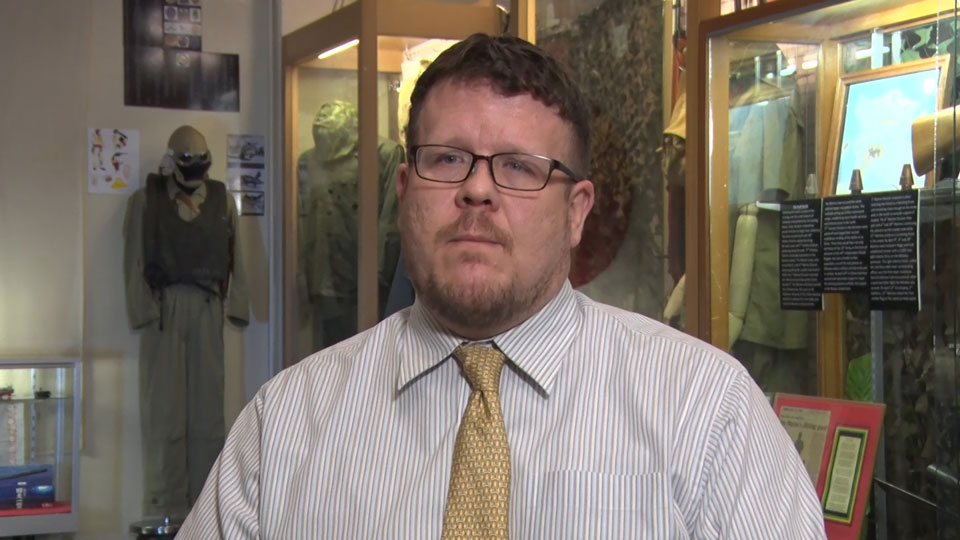
"It was nothing like the Americans had to face up to that point in the Pacific," said Waycaster. "There’s a huge civilian population, but how do you extricate the civilians from a military that basically fronts up with a civilian population."
Waycaster further explained what must have been going through the minds of the American fighters.
"If you are a 17- or 18-year-old kid and all of a sudden you've got a body that's hunched over and is moving from right to left in front of you, and you are told there's Japanese troops out there, you fire. You don't ask questions."
Villagers' fading memories
Many residents still don't know what exactly happened when the fighting broke out at the Pinnacle, because few islanders have shared their memories with the younger generations.
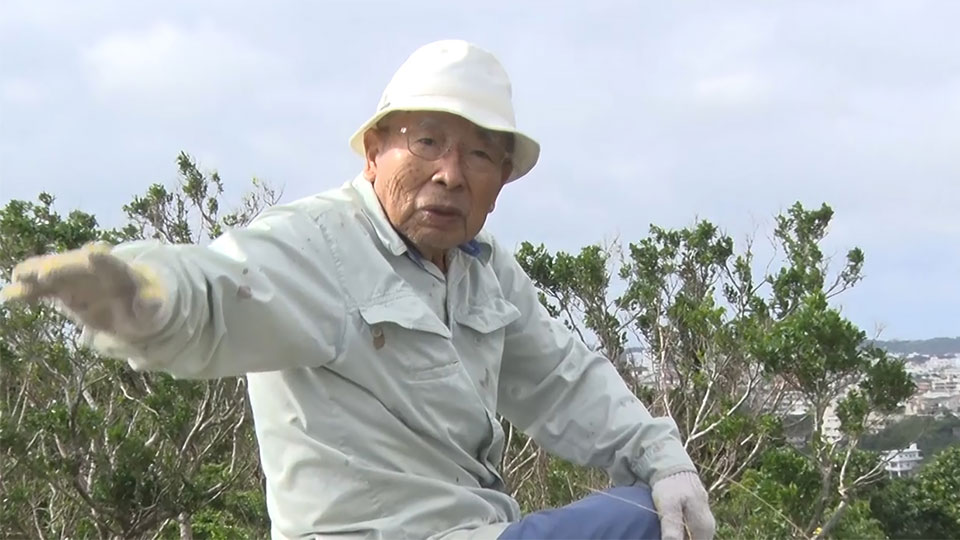
Seishun Komesu is 83. His father Seiki, known for his masonry skills, was ordered to help build the Pinnacle. He also took part in the battle.
"I saw numerous skulls in the tunnel. It was scary to see them. It was terrible to think that so many people had to die here," said Seishun.
His father died 20 years ago, without sharing his memories of the fighting.
"My father might have thought that the Pinnacle should not have been built. But I don't know how he felt, because he didn't talk about it," said Seishun.
An entire village fortified
What was the situation in the village at the time?
We gained access to previously classified documents at the National Institute for Defense Studies that offer clues.
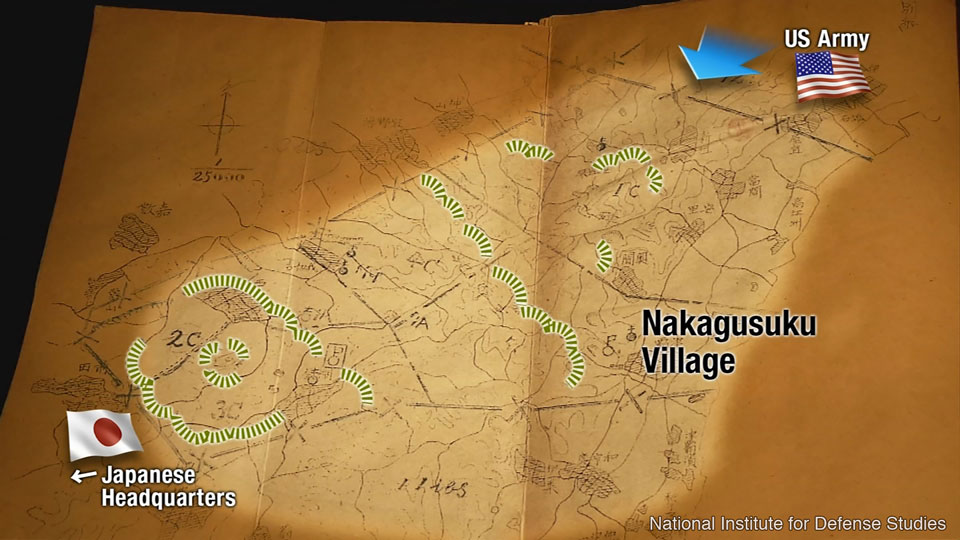
They show that the Pinnacle wasn't the only military position. There were numerous fortified positions across the village. Records of orders issued by the Japanese Army at the time survived the war because they were seized by US forces.
They show the commander of the Japanese battalion in Nakagusuku giving an order to "radically strengthen fortified positions." The Japanese military was severely short of manpower, so officers decided to mobilize the local population to build fortifications.
"They didn’t know when the American forces would land," said Lt. Col. Tatsushi Saito of the National Institute for Defense Studies. "That's why they had to start working on the fortifications as quickly as possible, to get ready for the battle against US troops."
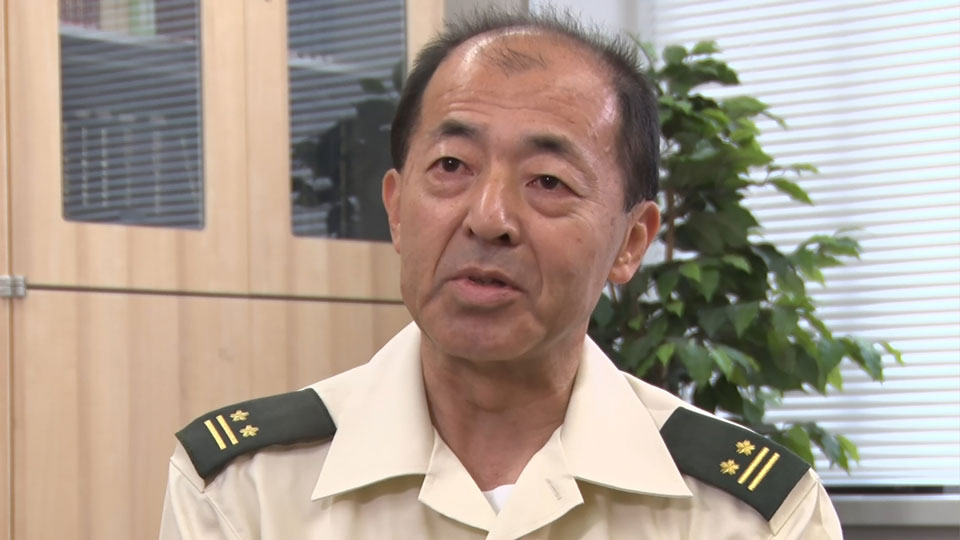
Whole scale mobilization
Civilians were even sent to the frontline, regardless of their age or gender. We found documents that explain what they went through, based on testimonies of residents interviewed after the war. The documents are not public. We were allowed to film them on condition that individual names be kept confidential.
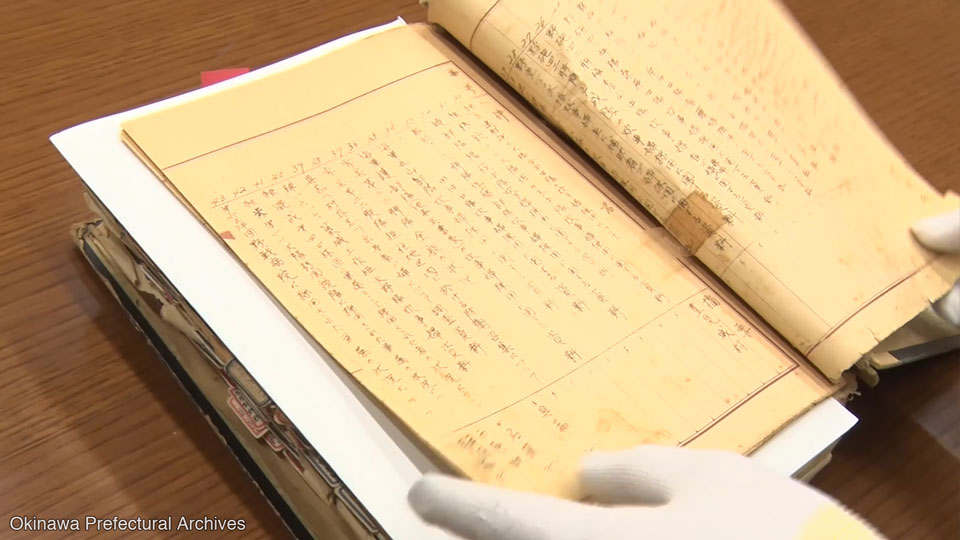
"On March 27th (of 1945), the girls' youth team was ordered to join the army. We were told not to leave the village, and that we would be shot if we disobeyed," one of the testimonies stated.
"An army officer went from house to house and forced high school students to enlist directly," said another.
Boys were instantly turned into soldiers. Girls were drafted as cooks and nurses, but some were also given weapons and hurried to the front.
"When we talk about the Battle of Okinawa, the term 'whole scale mobilization' is one of the key phrases we use," said Shinobu Yoshihama, a leading expert on the battle.
"There weren't enough Japanese troops to fight in Okinawa, so the army just went ahead and started gathering women and others. The mobilization was total, both physically and mentally," he said.
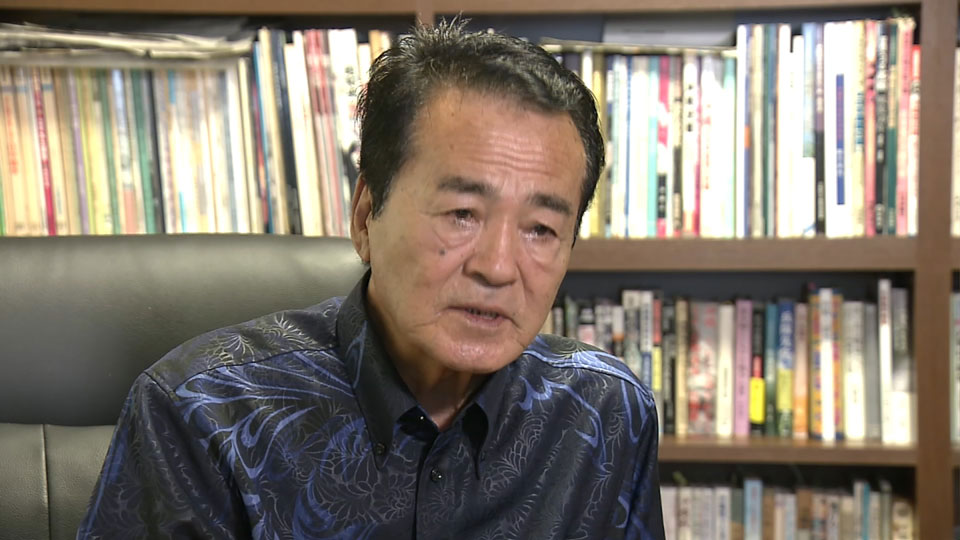
A survivor of the mobilization
Hiroko Goya, 91, was conscripted into the army as a nurse at the age of 17. She says American forces shot continuously and without discrimination. "The bullets hit everyone, unless you were lying face down on the ground. Everyone walking upright got shot."
Goya worked in the battlefield for months. She survived by hiding in caves, going for days without food.
"I thanked the gods. I felt I owed my survival to Heaven and Earth," she said.
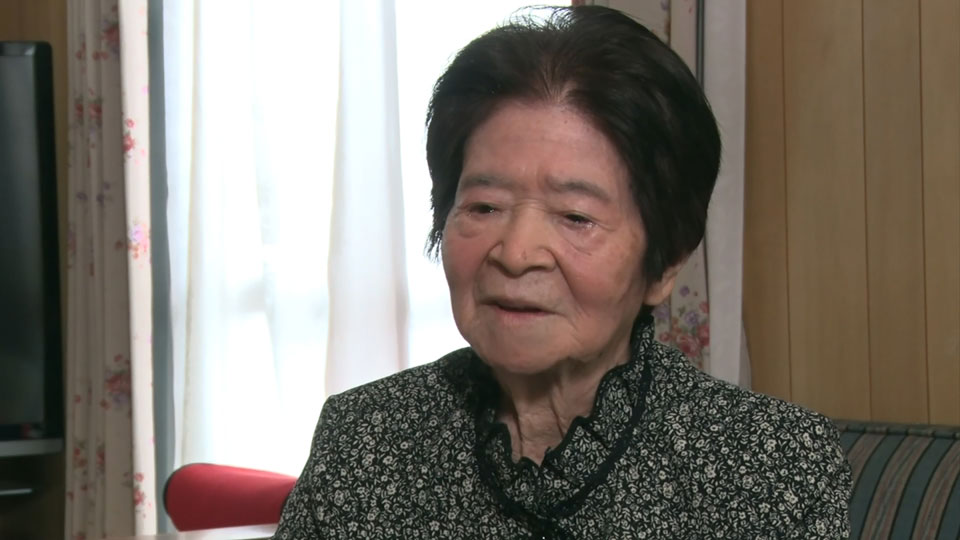
Preserving the memories
We met another woman in the village who is trying to record memories of the war that are fading with time.
Ryuko Kushi, 64, has been visiting elderly villagers to collect their testimonies. Her mother Toyo has recently started to talk about the battle, little by little.
For decades, most of the survivors never spoke about the war, because of the lingering trauma of losing family and friends. "My mother thinks that what happened will be forgotten if she doesn't speak out about the tragedy of war," said Ryuko.
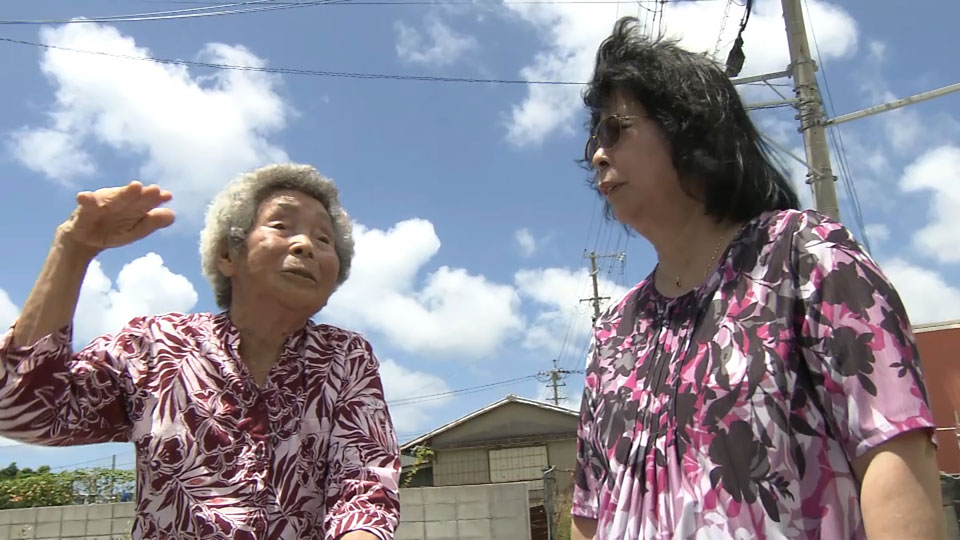
Toyo Arakaki, 89, remembers the terrifying scenes she witnessed as a 14-year-old. "The sound of shelling was horrific. Planes would attack with their machine guns and set houses on fire," she said.
Toyo recalls hiding in a dugout when US soldiers attacked. She said she stayed there for about two weeks, fearing she would be found and killed by the soldiers. She said they had nothing to eat. "It was really tough. All we could do was lick salt and drink water from a drainage ditch."
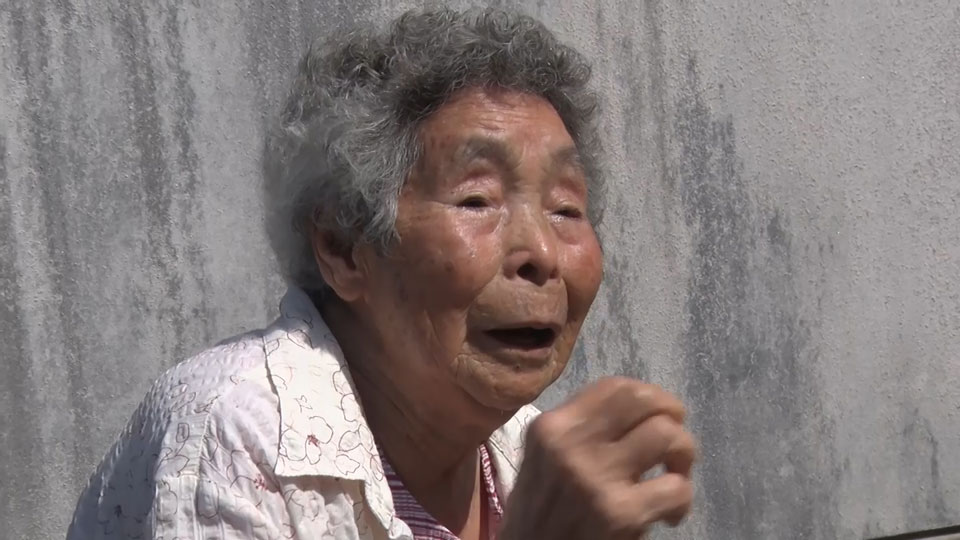
Toyo was pulled out of the dugout at gunpoint by US soldiers. Before that, her family had been considering suicide.
"We sensed that the war was coming to an end, so we decided to open our family tombs and kill ourselves so we could all leave this world together," Toyo told Ryuko while visiting a site where a dugout once was.
"I never heard that you were all about to die," said Ryuko. "You survived by a hairsbreadth."
Ryuko thought that what had happened during the war should not be lost to oblivion. In April, she entered graduate school at University of the Ryukyus in Okinawa. She chose villagers' war experiences as the theme of her studies, and will write her thesis on the subject.
For Toyo, it's hard to forget the battle. She is continuously reminded of it, living just five kilometers from the US Marine Corps Futenma Air Station.
"I always remember the war. US military planes flew over from this direction," said Toyo, when asked if the helicopter buzzing overhead reminds her of anything.
"I think my mother still thinks quite often about what she experienced. Inside her, the war has never ended," said Ryuko. "I would like to hear her story if she's willing to share it with me."
War is not a thing of the past
Okinawa continues to host many US bases. 70 percent of US military facilities in Japan are still concentrated in this tiny part of the country.
"I want the US bases to disappear from the island. But they have remained in Okinawa even since it was returned by the U.S., placing a heavy burden on its people," said Ryuko. "In other words, Okinawa is still being forced to sacrifice itself for Japan's mainland, just like it did during war."
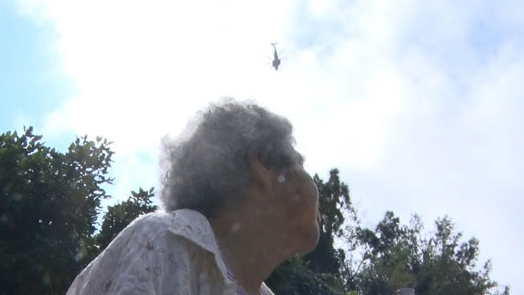
Ryuko said her mother recently told her that she is afraid of the noise from the US Osprey aircraft. She now understands that this is because of her mother's wartime experience. Toyo always kept her suffering to herself.
"War is not a thing of the past. It continues to affect people even to this day," said Ryuko. "We could be victims again, but we could also inflict harm, because the US bases are here in Okinawa."
